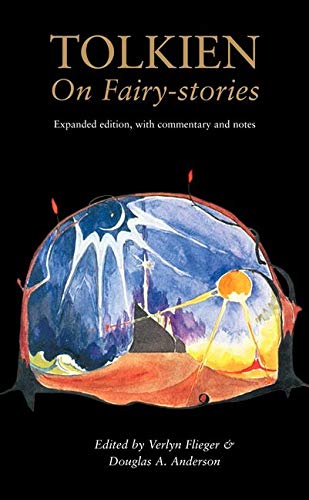
This site uses affiliate links for which we may be compensated
256758567521
Seller: arkhambooks
(1263)
100.0% positive
Sandy, Utah, US
Completed
:
Ended Jan 8, 2025 9:32:27 PM UTC
Category: Books & Magazines:Antiquarian & Collectible
$999.00









Boston: Houghton Mifflin, THE HOBBIT or THERE AND BACK AGAIN, By J.R.R. Tolkien, 1958, 10th Impression (From sheets printed in Great Britain), Beautiful Condition! (HIGH GRADE, Rare Thus), Hardback with DustjacketBOOK: THE HOBBIT By J. R. R. Tolkien: Truly a magnificent and important book in a Scarce early impression, but more importantly (and quite rare) in SHARP condition! Book is lite green cloth with dark green (some call it blue) stamping of Title to front board, and Title, Dwarf hat, Author, Publisher to spine. The title verso has no printing history, however the dustjacket is marked "tenth impression" and all points are consistent with the 10th printing as noted on the Wikipedia website. Published by Houghton Mifflin in 1958 from sheets printed in Great Britain. Back dust jacket flap states "printed in Great Britain." Verso of title print also stated "printed in Great Britain." The Hobbit (second edition) was published in America by Houghton Miflin, starting in 1951. These were the 5th through 14th impressions (5th impression being second edition, first printing ... the 1st through 4th impressions were the first editions, published in 1938). When purchasing a second edition, it is the 5th through 14th impressions that are most desirable collectors. The third edition and later editions are plentiful. Approximately 5" x 7.5" (duodecimo), 315 pages. (Last page, page 315, has short advertisment note about Lord of the Rings).CONDITION: Book is a VG in a Near Fine (borderline Near Fine Plus) dust jacket. Truly the strength of the book the dust jacket. It is one of the nicest I have seen for sale on a second edition. The front panel is bright and attractive with no apparent fading/toning (nary a day of sunlight has hit this panel). There is a wee bit of edge wear, but minimal. The spine is also bright (and in fact as bright as the front panel, no toning/sunning here either). Moreover, the spine/front panel edge is almost perfect (a notrious fault with this jacket is heavy rubbing and wear on this edge). There is a wee bit of loss and rubbing to the top of the spine (as can be seen in the scan). Heel of spine has faired much better, with just minimal shelf wear and a small bit of rubbing on the corners. Back panel as well is quite bright with no fading/toning. The only flaw is a small 1/4" closed tear at the upper right hand corner. A touch of shelf wear to the top edge of the back panel (surprisingly none to the bottom edge). Panels are as well in nice shape. A touch of yellowing to edges and to the white areas, but no rubbing, tears, folds, or writing. It is quite apparent that this was put in a brodart quite early, which has protected the jacket well. Colors are bright and unsoiled. A few dark spots (do not appear to be foxing, but rather age darkening) mostly to the flap and map areas. No names, writing, offsetting, or foxing noted. Sharp and attractive!! (I tend to grade conservatively and extensively, as a collector I want you to be happy, but this is a great looking jacket ... many booksellers would call it Fine and be done with it!). Book is very good, with a little soiling to the edges and some minor marking from a previous non-archival dustjacket protector. There is some lite wear to the bottom of the spine, which is beginning to show a little cracking, but no fraying. Spine is ever-so-lightly toned (hard to notice, just a touch). Textblock is a bit dusty with one small ink spot on the top edge, which does not penetrate the pages. Dust jacket far outshines the book. Truly rare in this condition.BOOK: One of the greatest children's books of all time. It has imbedded itself within our culture, and is truly a Holy Grail among Fantastic Fiction collectors.FROM THE DUST JACKET In a 1955 letter to W. H. Auden, Tolkien recollects in the late 1920s, when he was Professor of Anglo-Saxon at Pembroke College, he began The Hobbit when he was marking School Certificate papers. On the back of one of the papers, he wrote the words "In a hole in the ground, there lived a hobbit". He did not go any further than that at the time, although in the following years he drew up Thror's map, outlining the geography of the tale. It was eventually published when a family friend named Elaine Griffiths was shown a typescript of the story in the early 1930s. When she later went to work for George Allen & Unwin, she revealed the existence of the story to a staffmember named Susan Dagnall, who in turn asked Tolkien if she could look at the (still incomplete) manuscript. He complied and Ms. Dagnall, impressed by it, urged him to complete the book. Once this was done in late 1936, she then showed the book to Stanley Unwin, who then asked his son Rayner to review it. Rayner wrote such an enthusiastic review of the book that it was published by Allen & Unwin.Tolkien introduced or mentioned characters and places that figured prominently in his legendarium, specifically Elrond and Gondolin, along with elements from Germanic legend. But the decision that the events of The Hobbit could belong to the same universe as The Silmarillion was made only after publication, when the publisher asked for a sequel and Tolkien began work on what would become The Lord of the Rings.The novel draws on Tolkiens knowledge of historical languages and early european texts - many names and words derived from Norse mythology, it makes use of Anglo-Saxon runes, and is filled with information on calendars and moon phases, detailed geographical descriptions that fit well with the accompanying maps - attention to detail that would also be seen in Tolkiens later work.Shipping USPS Priority Mail, Packed very carefully to ensure it will arrive in the best condition!





 97
97 23.98K
23.98K